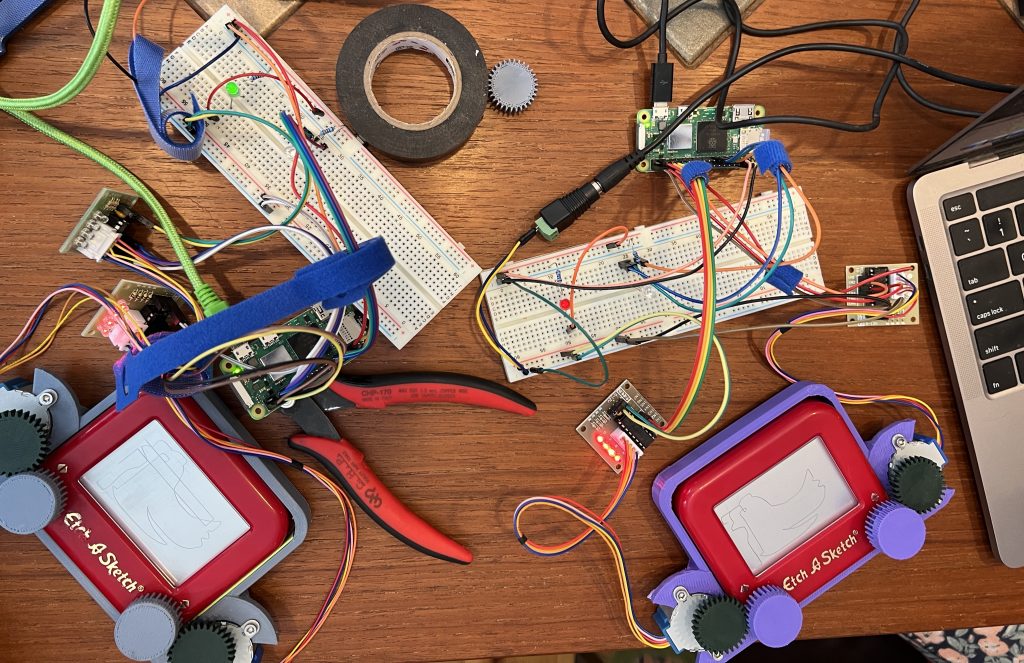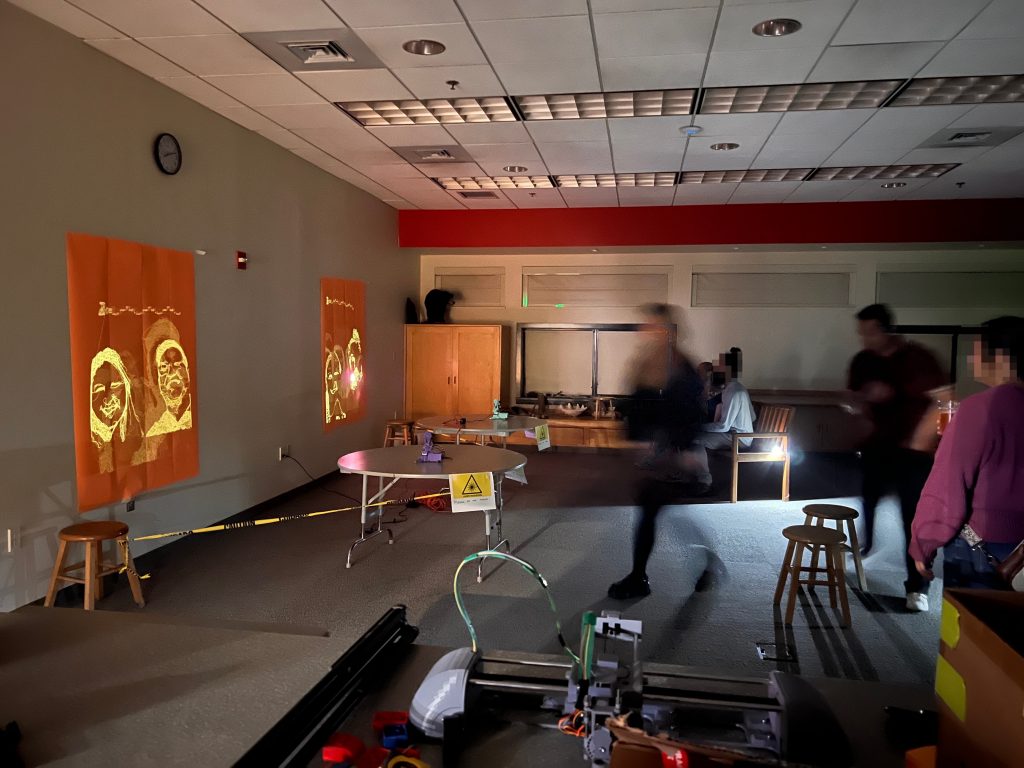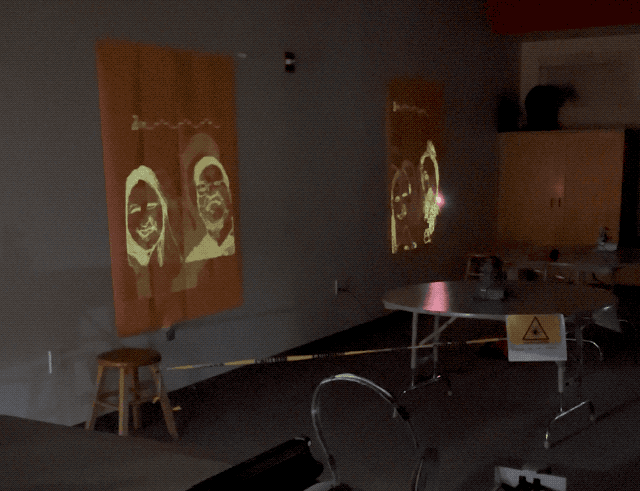Robotics 2025 concluded with 2 kids having built the small Etch-a-Sketch plotter after 5 sessions, and an extra one to just consolidate and draw. There isn’t much to say other than it went like a charm. I’ve added onto the Inherently Programmable Pi so they could have a basic HTML interface to their machine, I have yet to publish the update. This solution I feel is a bit of a game changer for engaging with robotics. At best it lowers the bar significantly for uninitiated learners; at worst it’s just darn convenient to get to work on your Pi project anywhere. A few years ago I’d promote it on a few online communities, these days I just don’t have the will to do much of anything online, but I really should.
Playing with the RPi Etch-a-Sketch
I’m recreating the small SketchyBot for an electronics/robotics curriculum. It’s a perfect opportunity to let kids play with it.
Bis Repetita
Second deployment of Laser Portraits at a public event. It was a lot busier this time around, and totally fun as previously. Also very stressful until a few portraits are behind me. It doesn’t matter how much I test and check, something always goes wrong but I got it all figured out just in time. I’m also refining the formula for how to present and interact with people. The PewtyBots performed all evening without missing a beat.






